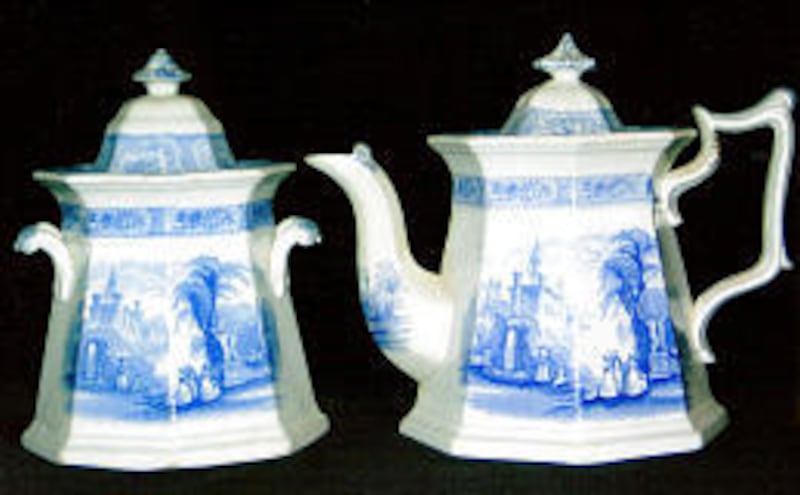Dear Helaine and Joe:Enclosed is a photo of a "pearl stone" teapot and what I believe is a sugar bowl. The teapot cover has the ironstone logo with the "Rd" symbol. We would like to know the age of these and possibly where they were made. Neither of these is in the best of condition, so I suspect they have little or no monetary value.—G.B.K., Sebastian, Fla.
Dear G.B.K.: The mark in the photograph reads "Friburg" and "G Phillips Longport," and this is enough to tell us the name of the pattern, who made it and where — and that is a lot to know from just three or four little words.
The pattern of this teapot and sugar bowl is called "Friburg" and it was made in the pottery owned by George Phillips, which was located in Longport, Staffordshire, England, from 1834 to 1848. This firm had actually been established in 1822 as Edward and George Phillips, but by 1834, Edward was no longer part of the operation and only George remained to run the pottery.
Now, to say that these two pieces were made sometime between 1834 and 1848 is usually about as close as we can get, but in this case, the "Rd" symbol that G.B.K. mentions tells us more and will allow us to date these pieces much more closely. The diamond-shaped registration symbol with "Rd" in the center was used on English products from 1842 to 1883, and served as a kind of patent for designs and products.
It can be found in two variations, with the first being used from 1842 to 1867, and the second similar-looking mark in use from 1868 to 1883. The one on the ironstone teapot and sugar bowl in today's question is of the first variety and has an "I" in the top point of the diamond underneath the Roman number "IV," which was the designation used on all ceramic items.
The "I" signifies that Phillips registered the "Friburg" pattern in 1846, and the "K" seen in the left-hand point of the diamond stands for November, while the "5" in the right-hand point tells us the exact day of the month on which this was done. So, this particular pattern was registered on Nov. 5, 1846, and the ironstone pieces belonging to G.B.K. could only have been made in the less-than-two-year period between this date and the factory's closing in 1848.
These two pieces are a type of earthenware called "Ironstone" that was patented in 1813 by Staffordshire potter Charles James Mason. It was inexpensive and durable and was made by "pounding slag of ironstone in water" and then mixing it with flint, clay, Cornwall stone and cobalt oxide to serve as a whitening agent.
This Ironstone body was so popular that a number of companies made it and many adopted their own trade name for it, such as "Stone China," "Opaque China," "Granite China" or, in the case of the Phillips product, "Pearl Stone."
The blue decorations found on these pieces are transfer prints, and they are in the lighter shade of blue that collectors often associate with English Staffordshire pottery from the 1840s. In perfect condition, the insurance replacement value on these items would be in the $700-to-$800 range, but in seriously damaged condition that value could drop by as much as half or more.
However, G.B.K.'s examples do not appear from the photograph to be that damaged, and a small chip or hairline crack in the bottom might only lower the value by about one-third.
Helaine Fendelman and Joe Rosson are the authors of the "Price It Yourself" (HarperResource, $19.95). Questions can by mailed to them at P.O. Box 12208, Knoxville, TN 37912-0208.

